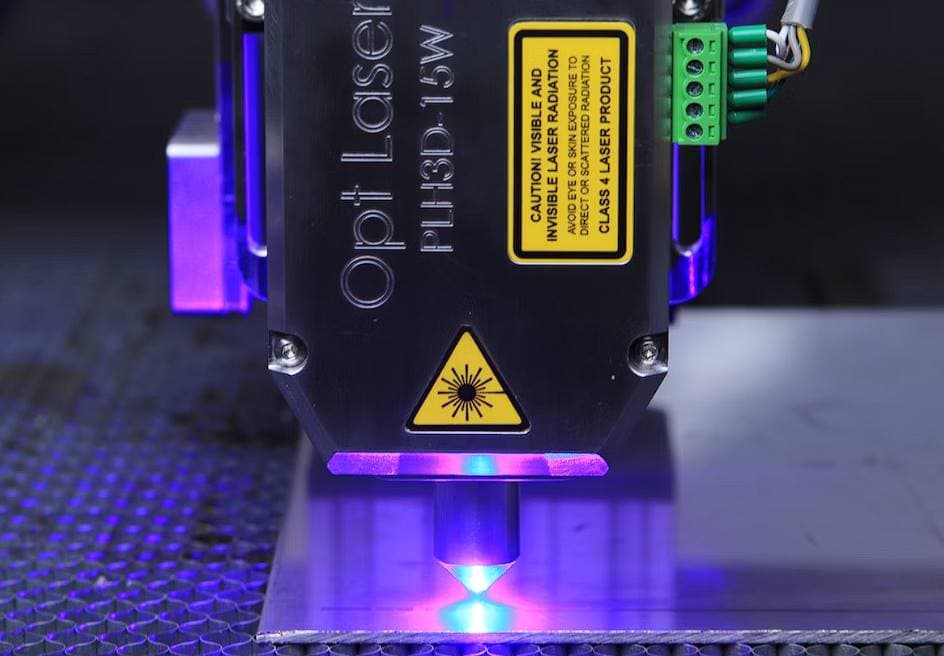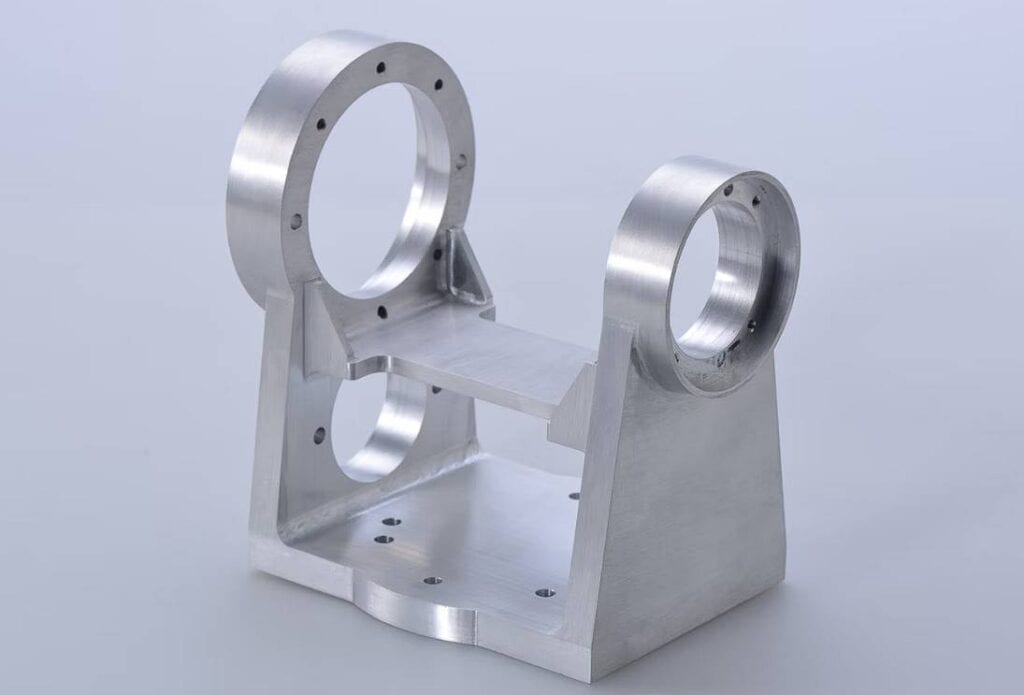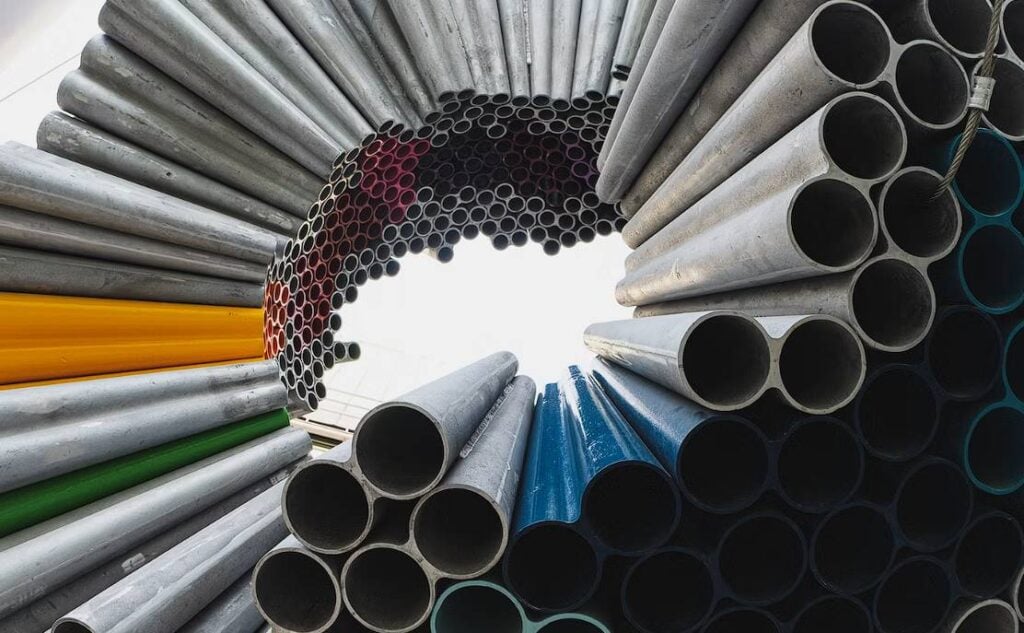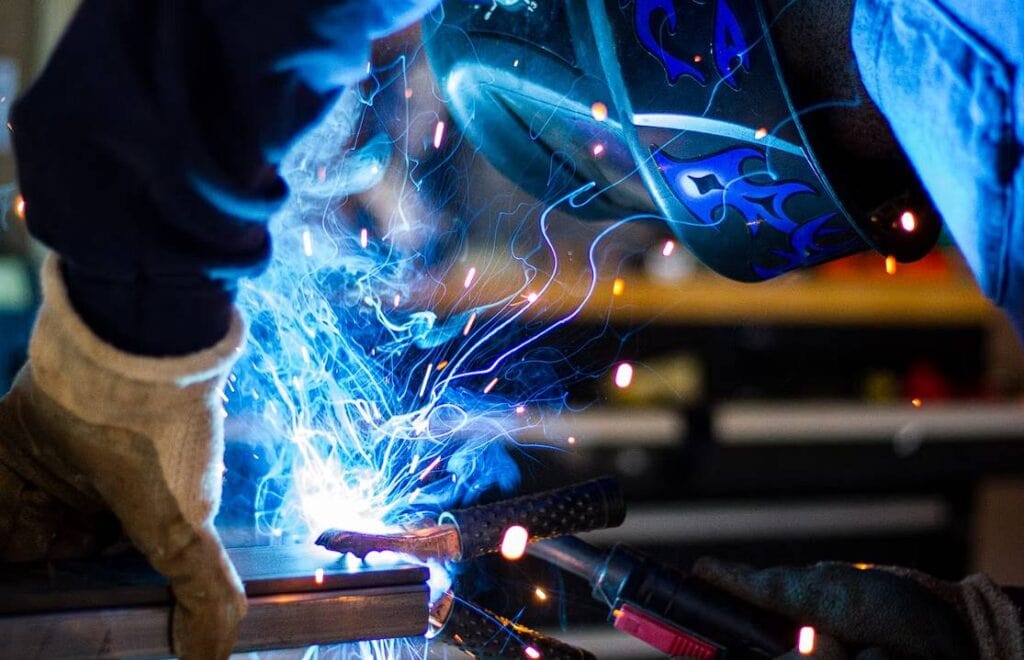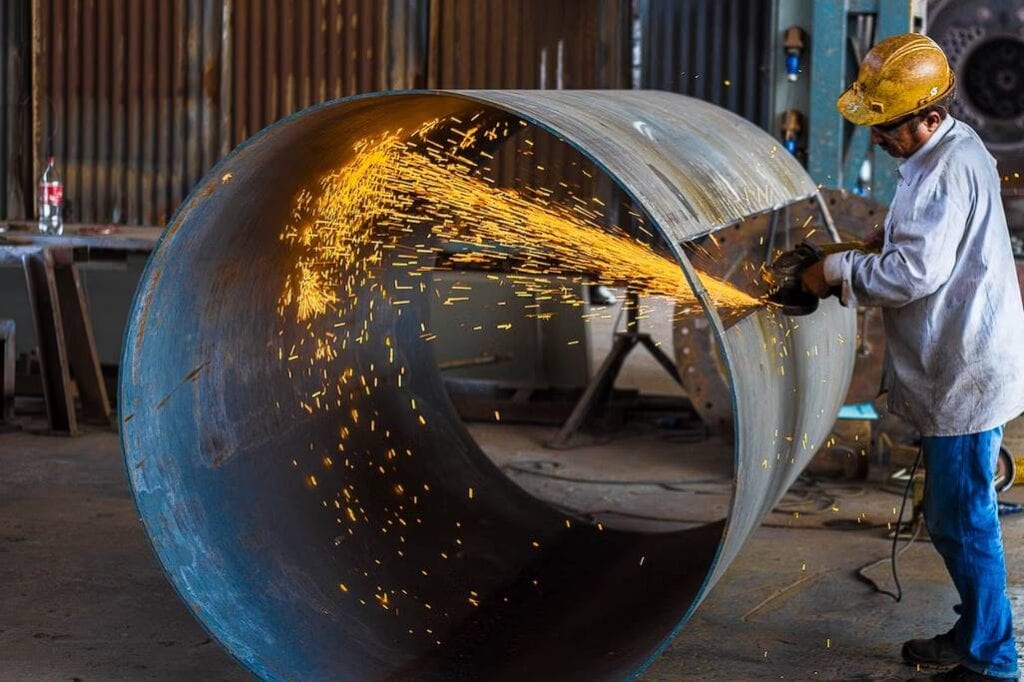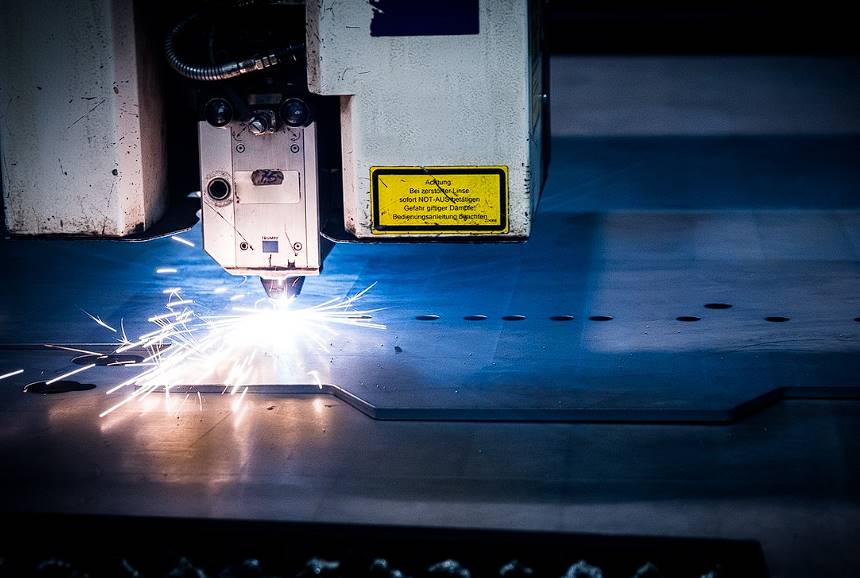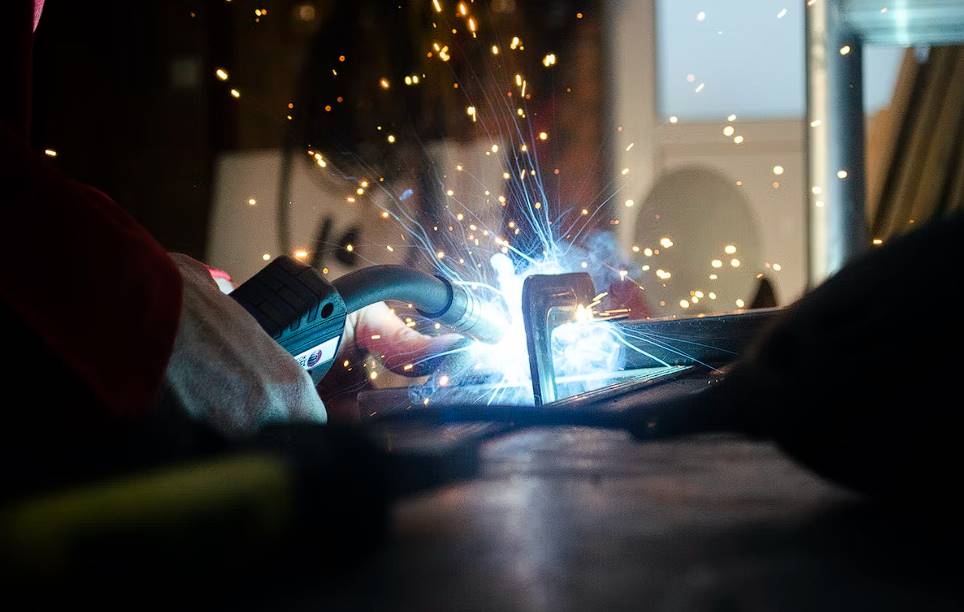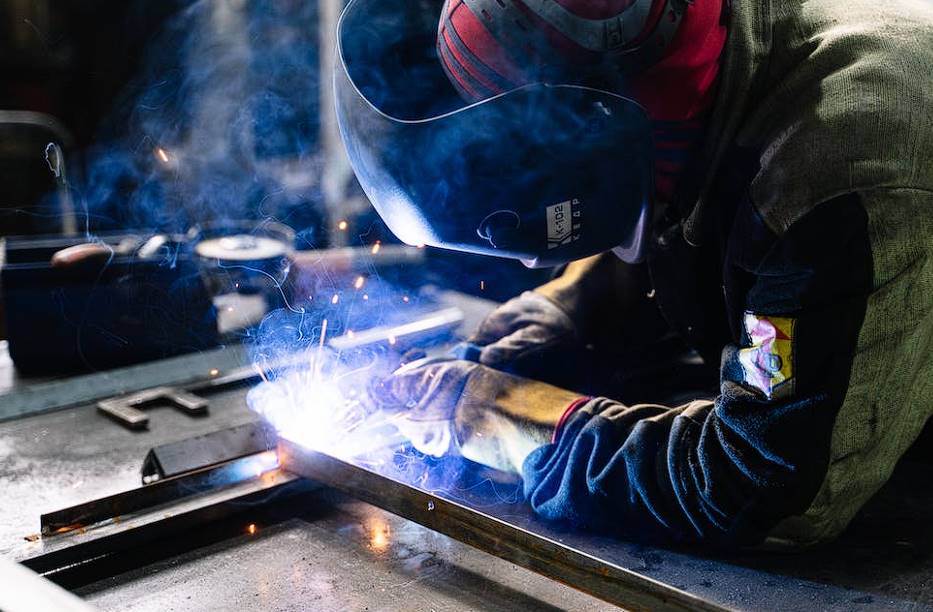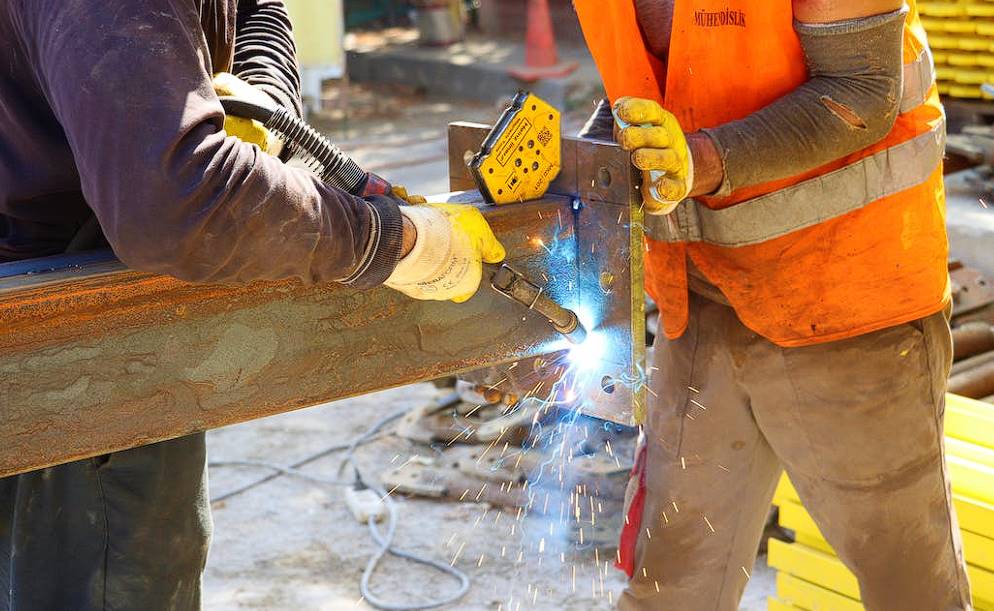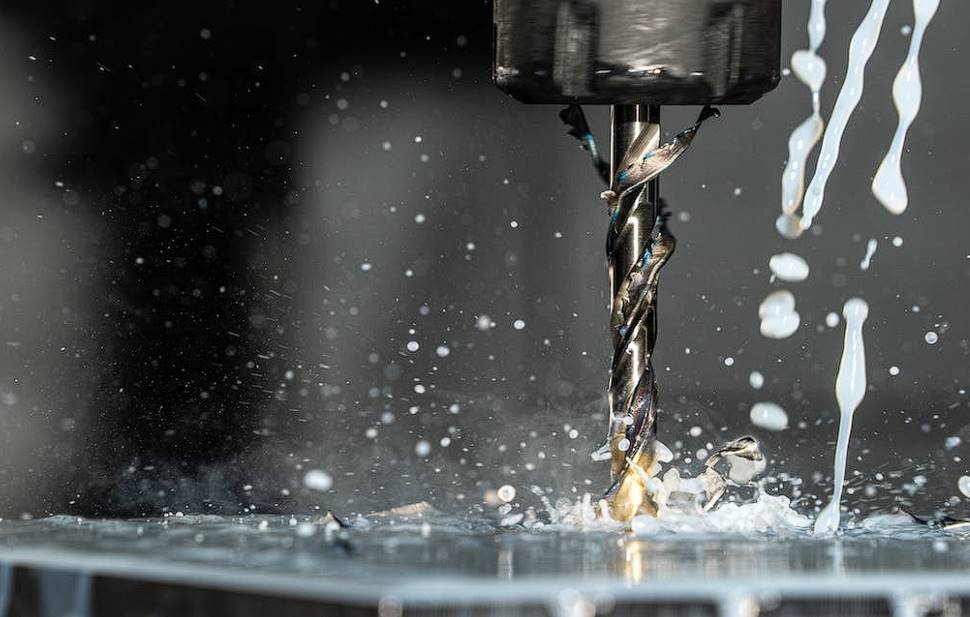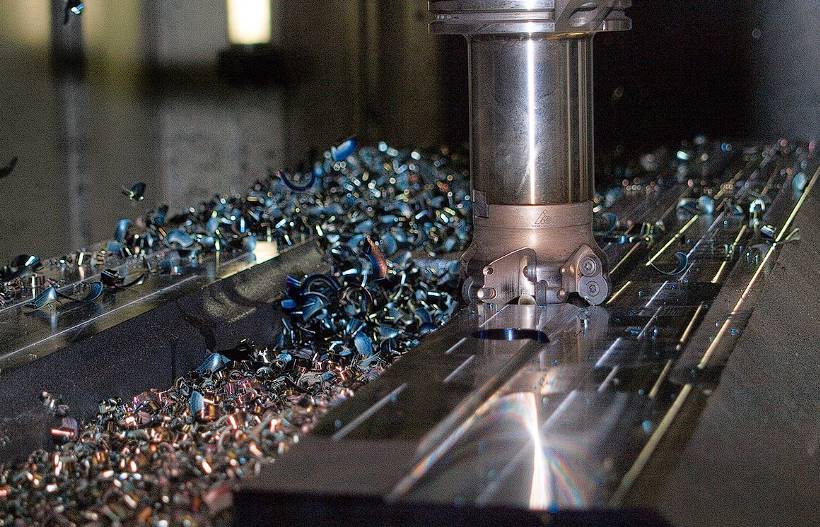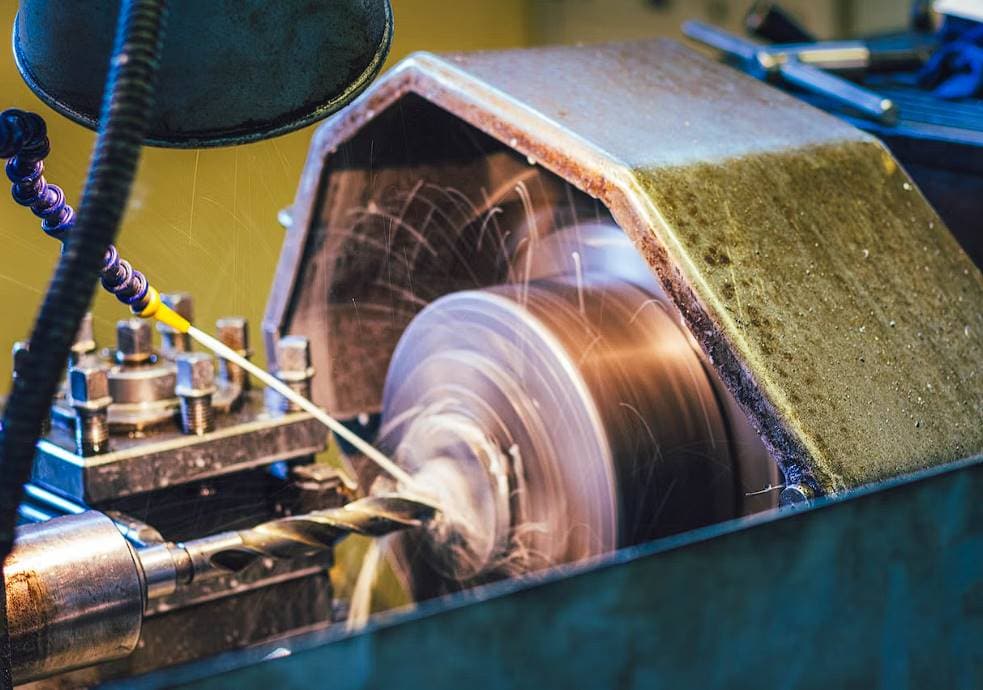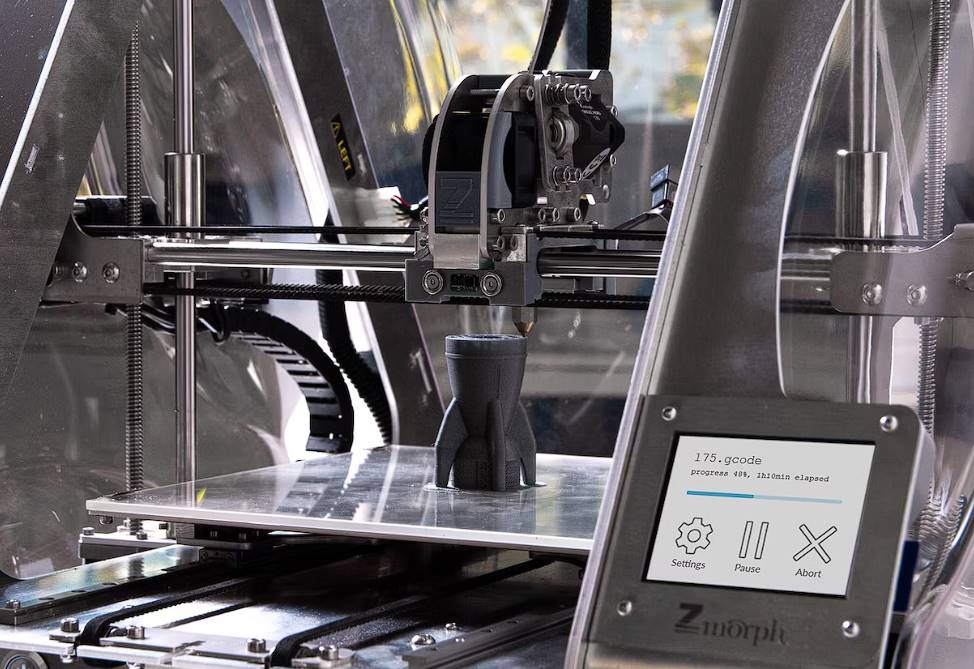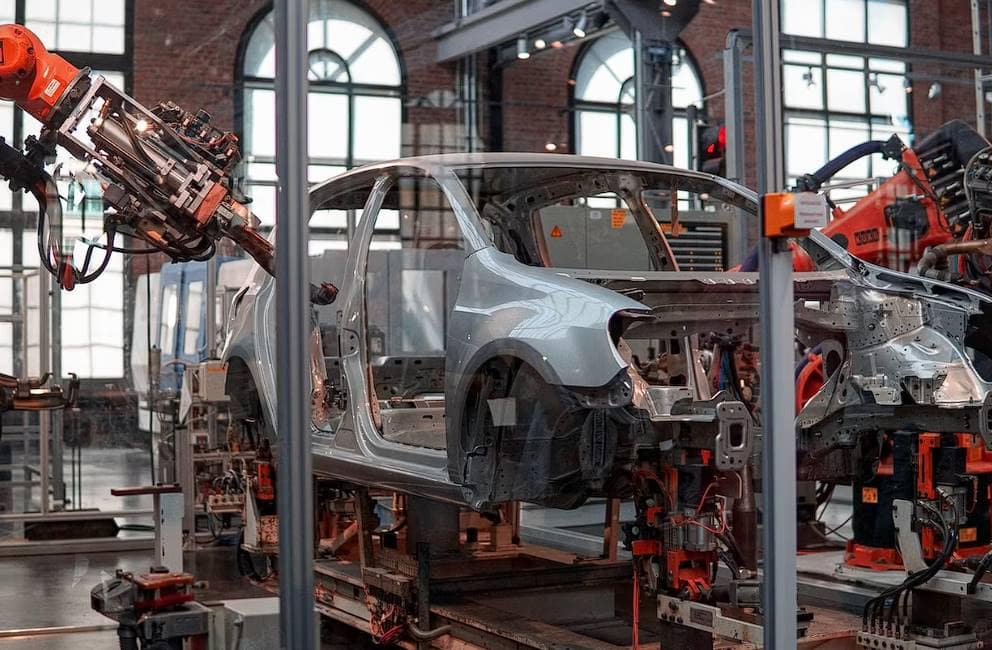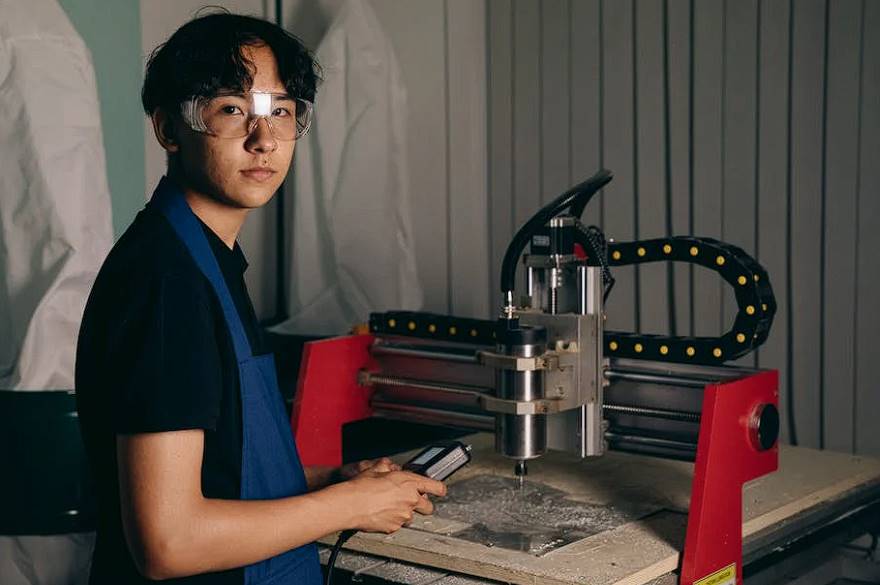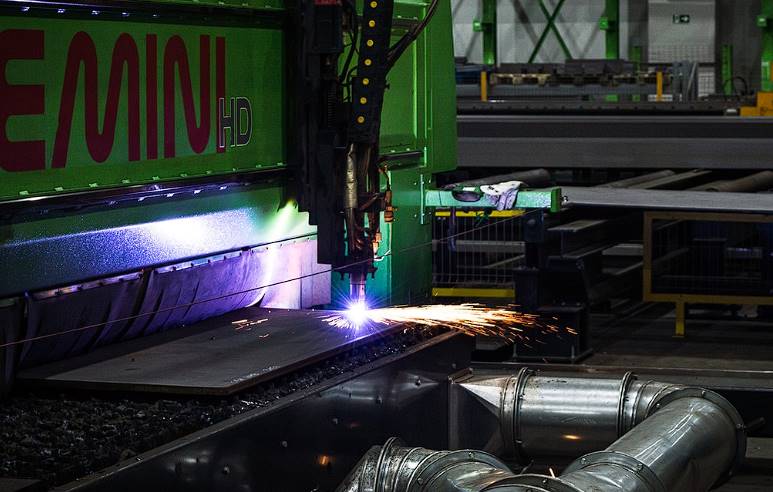Cutting processes are required for materials to undergo surface microstructural change. Laser cutting is widely used in the machining industry to cut various materials. It's useful for making patterns in line with plans and desired results. This method uses a strong laser beam to melt, burn, and vaporise substances. Laser cutting has many benefits, but there are also some drawbacks that must be taken into account.
A laser cutter uses a focused, narrow laser beam to make clean cuts in a variety of materials. It's only possible to begin cutting with a clear goal, which you can determine from your designs or patterns. Some materials are extremely tough and difficult to manufacture. However, this has become simple with the advent of the laser cutter.
In this blog, we will teach you everything you want to know about laser cutting. The benefits and drawbacks of laser cutting, as well as how it operates, are discussed.
What Is The Process Of Laser Cutting?
Learning the basics of laser cutting is a prerequisite to discussing its benefits and drawbacks. Laser-cutting machines function in a manner analogous to computer numerical control (CNC) machines but employ a high-powered laser instead. The laser will use CNC and optics to direct the material or beam in the desired direction. The provided CNC or G-code will cut into the material and regulate the device's motion.
Once the laser beam is focused, melting, vaporisation, and combustion will occur. Also, if you blow the material with a jet of gas, you can obtain a high-quality finished edge surface. A laser beam is produced in a vacuum chamber when lasing materials are excited by lamps or an electrical discharge.
The lasing materials are amplified after being internally reflected by a partial mirror. This process continues until enough energy is stored in a coherent monochromatic light stream to release it. Using fibre optics or mirrors to concentrate the light on the workspace boosts its efficacy.
A laser beam's narrowest point has a diameter of less than 0.32 mm. On the other hand, the kerf width may be as narrow as 0.10 mm. However, the thickness of the substance is a factor here. Use the piercing method if the material you're cutting with a laser cutter doesn't have a clean edge from which to start cutting.
The laser can make a hole in the material with great force thanks to the piercing method. As an illustration, it takes between 5 and 15 seconds to melt through a 13 mm stainless steel sheet completely.

What Are The Advantages Of Laser Cutting?
A wide range of benefits come with using laser cutting technology. The following is an explanation of a few of these benefits:
High Accuracy And Precision
The laser's concentrated beam of light allows for extremely precise material removal. The laser is compact and powerful, but it's precision in melting and evaporating materials is unrivalled. Laser tolerances typically fall between 0.003 and 0.006 mm.
Plasma cutters have a greater tolerance (around 0.02 mm) than laser cutters. Similar tolerance levels of 1-3 mm are found in other cutting tools.
A highly precise and accurate machine is required in the factory. In such a scenario, laser cutters are frequently used. As a result, laser cutting is used in the aerospace industry, which has stringent tolerance requirements.
No Material Contamination
When using a rotary cutter to process materials, it is customary to use coolants. The cut parts may become contaminated with the coolant and require degreasing. Grinding operations may call for the use of a coolant or lubricant. Carbide granules, left behind after the ablation of the grinding wheel, pose a risk in many finished goods. Garnet dust is also left behind when using a water cutter. There is no chance of material contamination in laser cutting because only energy and gases are used.
Flexibility
When compared to more cutting technologies, laser cutting has many benefits. The necessity to switch tools between cuts is eliminated, which is a major advantage. Once calibrated, a laser cutter can quickly and precisely cut a wide range of shapes from a single sheet of the same thickness. This is helpful when there are multiple cuts or complicated designs.
Laser cutting can also be used to make precise, detailed cuts. The laser beam's accuracy and precision make it possible to cut complex designs without sacrificing quality. Laser cutting is a great option since such designs are difficult to cut by hand.
Affordability And Low Cost
One of the benefits of laser technology is its cost savings compared to similarly capable CNC machines. Laser cutting eliminates the need for making a one-of-a-kind device. Since no additional cutting tools are required, there is no need to modify the device for any project.
Due to the lack of direct contact, the surface is also protected from deterioration. Since the laser cutter has relatively few moving parts, it requires less servicing than other machining technologies. The machine's operating costs are also lower than those of more conventional manufacturing methods.
High Speed
Laser cutting is one of the fastest manufacturing technologies available. A 12 kW oxygen-assisted laser can quickly cut through a 40 mm steel sheet, making laser cutting a genuinely amazing process. Cutting using a laser can be as quick as 50 to 100 times faster than a wired approach and as fast as ten times faster than a bandsaw.
Since laser cutting can complete tasks so quickly, it is a great option for industrial settings requiring high levels of productivity in a short time. Laser cutting provides unmatched speed and productivity, making it ideal for large-scale projects and high-volume production runs.
Automation
Modern laser cutting equipment is so mechanised that only a small number of people are needed to complete the task. A skilled machine operator still plays a significant role in determining the final quality. Still, the reduced need for manual labour and increased cutting speed leads to significant cost savings compared to alternative cutting methods. Many machines have built-in feeding systems and subsequent conveyors. Naturally, such configurations result in a more expensive laser cutter.
Used For Jobs With Extremely Complexity
When compared to other cutting technologies, laser cutters make short work of many tasks that would otherwise be difficult. The laser technology can be used even on the most delicate of edges. A laser cutter can quickly produce complex geometries but can cause distortion or warping in the cut area. Laser cutting has a wide range of permissible materials and a high tolerance.
Variety Of Materials
Acrylic and other polymers, mild steel, titanium, stainless steel, Hastelloy, and tungsten are just some of the many materials that can be efficiently cut using laser cutting, thanks to the adaptability of the technology. As technology progresses, this adaptability will only increase. Cut carbon with a separate frequency for the fibre, and another for the bonding agent can be used.
Quality
When carbon fibre-reinforced composites are properly adjusted, laser cutters leave only a very small burr behind. In many cases, getting rid of it is unnecessary. It all depends on the specifics, like the thickness and type of material.
An additional advantage is that a restricted area is affected by the heat. Minimising the HAZ size improves predictability and reliability because less microstructure is altered along the HAZ.
Damage Prevention
One more perk of laser cutting is that it leaves no marks on even the thinnest materials. There is a widespread misconception that using the device will inevitably warp or otherwise damage the materials. The conventional wisdom holds that extreme heat is required during laser cutting.
Keep in mind that heat only affects a localised region of the material and does not affect the tolerance. The laser's lightning-fast cutting speed makes short work of thick sheets. Thus, warping and distortion can be easily avoided during production.
What Are The Disadvantages Of Laser Cutting?
Laser cutting is used to manufacture components in nearly every sector but has drawbacks. The laser cutting process has a number of advantages, but there are a few drawbacks to consider first.
Certain Materials Evaporate
Some materials, like plastics, tend to evaporate when cut. This is a major drawback of using a laser cutter. Professional machine operators, however, can easily work around this drawback.
The experts make adjustments to the device's configurations to avoid this issue. However, the current high cost of implementing these changes is a major drawback.
Material Thickness Limitations
The typical power of a laser cutter is around 6 kilowatts. They can only cut through metal as thick as 12 mm (at a rate of 10 mm/s). You can only get as far as the cutting limits of even the most massive equipment. However, Waterjet and wire erosion cutting are subject to the same constraints. These three methods make these more in-depth cuts faster than any other method.
Expertise Needed
To get the most out of a laser cutting machine, you need a professional operator who is familiar with its functions and can quickly spot any problems. The laser cutting equipment and the cut materials can be severely damaged if the machine is not properly set up. Hiring an experienced operator is essential for achieving peak efficiency and preventing costly missteps.
However, qualified professionals may need more supply, driving up service prices. Despite this, it is crucial to spend money on a skilled operator to maximise output, reduce waste, and prolong the life of the laser-cutting machine.
High Energy Consumption
Compared to other types of cutting tools, laser cutting machines have a much higher energy consumption rate. The energy a 3-axis CNC machine uses to remove blanks from 40 mm steel plates is roughly one-tenth that a machine requires. However, the required laser cutter uses only half as much energy as the CNC if the processing time is half as long (1 minute versus 20 minutes). In this respect, each component will have a unique profile, and analysing the differences can be challenging.
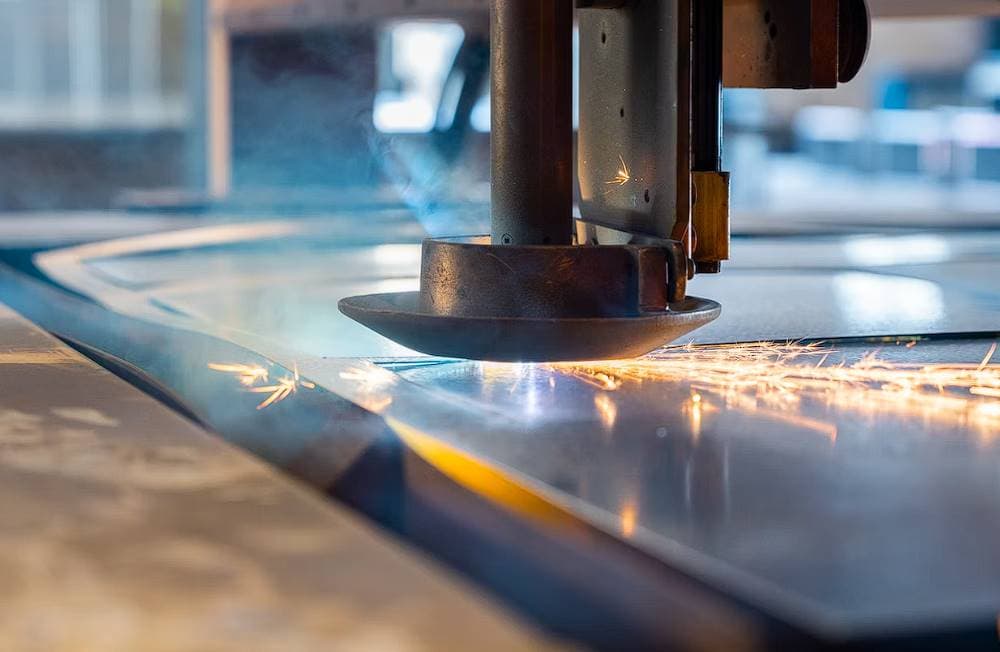
Creation Of Dangerous Gases And Fumes
Laser cutting has many uses because of the wide range of materials it can process. There are, however, some things to keep in mind when dealing with such flexibility. Laser-cutting materials that melt easily, like plastics, can release toxic fumes and gases. Toxic compounds are released as the laser's thermal cutting action slices through these materials.
Working with these materials requires adequate ventilation and all appropriate safety measures. Laser cutting can be done safely and efficiently on a wide range of materials if proper measures are taken to contain and remove the fumes that pose health risks to workers.
Upfront Costs
Purchasing a laser cutting machine may involve a substantial financial outlay. Laser cutting machines are typically more expensive than other cutting technologies like plasma cutting, with prices that are approximately double that of plasma cutting machinery. Costs associated with buying a laser cutter are often high. But it would be best if you thought about the returns and benefits in the long run.
Laser cutting is superior to traditional methods because of its greater efficiency, accuracy, adaptability, and speed. In the long run, a laser cutting machine can be a profitable investment for businesses due to the money saved, increased efficiency, and new possibilities it offers.
Conclusion
Laser cutting is a widely used machining process for creating patterns in various materials, allowing for surface microstructural change. It uses a strong laser beam to melt, burn, and vaporize substances, making clean cuts in various materials. The process involves a high-powered laser, which uses CNC and optics to direct the material or beam in the desired direction. The laser beam is produced in a vacuum chamber when lasing materials are excited by lamps or an electrical discharge. The laser beam's narrowest point has a diameter of less than 0.32 mm, and the kerf width may be as narrow as 0.10 mm.
The advantages of laser cutting include high accuracy and precision, no material contamination, flexibility, affordability, low cost, high speed, automation, and versatility. Laser cutting eliminates the need for making a one-of-a-kind device, requiring less servicing and lower operating costs compared to conventional manufacturing methods. It is also one of the fastest manufacturing technologies available, with a 12 kW oxygen-assisted laser cutting through a 40 mm steel sheet in 50 to 100 times faster than a wired approach and ten times faster than a bandsaw.
Laser cutting is ideal for large-scale projects and high-volume production runs, as it provides unmatched speed and productivity. It is used for jobs with extremely complex geometry, and can produce complex geometries without distortion or warping in the cut area. The variety of materials that can be efficiently cut using laser cutting is vast, with materials like acrylic, polymers, mild steel, titanium, stainless steel, Hastelloy, and tungsten being easily cut.
In conclusion, laser cutting offers numerous benefits, including high accuracy, precision, flexibility, affordability, and versatility. However, it is essential to consider the specifics of each material and the specific needs of the job. Laser cutting offers several advantages, including reduced heat exposure, damage prevention, and faster cutting speed. It is also known for leaving no marks on even the thinnest materials, preventing warping and distortion. However, there are some drawbacks to consider, such as the potential for certain materials to evaporate during cutting, material thickness limitations, and the need for a skilled operator.
A professional operator is essential for optimal efficiency and preventing costly missteps. Laser cutting machines have a higher energy consumption rate than other cutting tools, but they use only half as much energy as CNC machines. Additionally, laser-cutting materials that melt easily, like plastics, can release toxic fumes and gases. Proper ventilation and safety measures are necessary to work with these materials safely.
Upfront costs for a laser cutting machine may be high, but it is worth considering the long-term benefits. Laser cutting is superior to traditional methods due to its greater efficiency, accuracy, adaptability, and speed. In the long run, a laser cutting machine can be a profitable investment for businesses due to the money saved, increased efficiency, and new possibilities it offers.
Content Summary
- Laser cutting is widely used in the machining industry for cutting various materials.
- It uses a strong laser beam to melt, burn, and vaporize substances.
- Laser cutting allows for making patterns in line with plans and desired results.
- Laser cutters use a focused, narrow laser beam to make clean cuts.
- Laser cutting has simplified the manufacturing of tough and difficult materials.
- Laser-cutting machines function similarly to CNC machines but employ a high-powered laser.
- Laser cutting requires the use of CNC or G-code to cut into the material and regulate the device's motion.
- Melting, vaporization, and combustion occur once the laser beam is focused.
- Jetting gas can produce a high-quality finished edge surface during laser cutting.
- Laser beams are produced by exciting lasing materials with lamps or electrical discharge.
- Laser cutting can achieve high precision, with tolerances ranging between 0.003 and 0.006 mm.
- Laser cutting eliminates the need for coolants, minimizing material contamination.
- Laser cutting allows for flexibility in switching between cuts and making precise, detailed cuts.
- Laser technology offers cost savings compared to similarly capable CNC machines.
- Laser cutting is one of the fastest manufacturing technologies available.
- Laser cutting reduces manual labor and increases cutting speed, leading to cost savings.
- Laser cutters can handle jobs with extreme complexity and cut a wide variety of materials.
- The adaptability of laser cutting allows for cutting materials like acrylic, steel, titanium, and more.
- Laser cutters leave minimal burrs and have a restricted heat-affected zone, ensuring quality cuts.
- Laser cutting prevents marks and distortion on even the thinnest materials.
- Laser cutting has drawbacks, including material evaporation when cutting certain materials.
- Material thickness limitations exist for laser cutting, typically around 12 mm for metals.
- Laser cutting requires expertise and a professional operator for optimal performance.
- Laser cutting machines have higher energy consumption compared to other cutting tools.
- Laser cutting can produce dangerous gases and fumes when cutting certain materials.
- Adequate ventilation and safety measures are necessary when working with materials that release toxic fumes.
- Upfront costs for purchasing a laser cutting machine can be substantial.
- Laser cutting machines are more expensive than plasma cutting machinery.
- Laser cutting offers greater efficiency, accuracy, adaptability, and speed compared to traditional methods.
- Laser cutting machines can be a profitable long-term investment for businesses.
- Laser cutting is widely used in the machining industry.
- It is useful for making patterns in line with plans and desired results.
- Laser cutting uses a strong laser beam to melt, burn, and vaporize substances.
- Laser cutters make clean cuts with a focused, narrow laser beam.
- Laser cutting has simplified the manufacturing of tough and difficult materials.
- Laser-cutting machines function similarly to CNC machines but employ a high-powered laser.
- Laser cutting requires the use of CNC or G-code to cut into the material and regulate the device's motion.
- Melting, vaporization, and combustion occur once the laser beam is focused.
- Jetting gas can produce a high-quality finished edge surface during laser cutting.
- Laser beams are produced by exciting lasing materials with lamps or electrical discharge.
- Laser cutting can achieve high precision, with tolerances ranging between 0.003 and 0.006 mm.
- Laser cutting eliminates the need for coolants, minimizing material contamination.
- Laser cutting allows for flexibility in switching between cuts and making precise, detailed cuts.
- Laser technology offers cost savings compared to similarly capable CNC machines.
- Laser cutting is one of the fastest manufacturing technologies available.
- Laser cutting reduces manual labor and increases cutting speed, leading to cost savings.
- Laser cutters can handle jobs with extreme complexity and cut a wide variety of materials.
- Laser cutters leave minimal burrs and have a restricted heat-affected zone, ensuring quality cuts.
- Laser cutting prevents marks and distortion on even the thinnest materials.
- Upfront costs for purchasing a laser cutting machine can be substantial, but the long-term benefits make it a profitable investment.
Frequently Asked Questions
Laser cutting is compatible with various materials, including metals, plastics, wood, and fabric. However, some materials may not be suitable for laser cutting due to their composition or sensitivity to heat. It's important to consult with experts or conduct tests to determine the suitability of laser cutting for specific materials.
Yes, laser cutting is known for its ability to produce intricate designs with high precision. The focused laser beam allows for detailed cuts, making it suitable for applications that require intricate patterns or complex shapes.
Laser-cutting machines require regular maintenance to ensure optimal performance and longevity. This includes cleaning and inspecting the optics, checking and replacing consumable parts such as nozzles or lenses, and ensuring proper ventilation and cooling systems are in place. Following the manufacturer's guidelines and scheduled maintenance is essential to keep the machine running smoothly.
Laser cutting offers several advantages over traditional cutting methods, such as its ability to deliver precise cuts, versatility in material compatibility, and faster production times. However, there may be more cost-effective options for certain applications or materials. It's essential to evaluate each project's specific requirements and constraints to determine the most suitable cutting method.
Yes, alternative cutting methods are available, depending on the specific requirements and materials. Some alternatives include waterjet, plasma, and traditional methods like sawing or milling. Each method has advantages and limitations, and the choice depends on material type, thickness, and desired precision.

